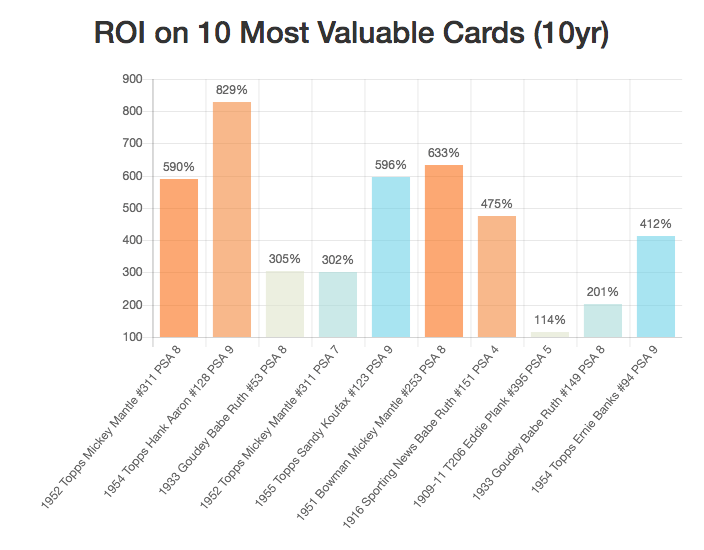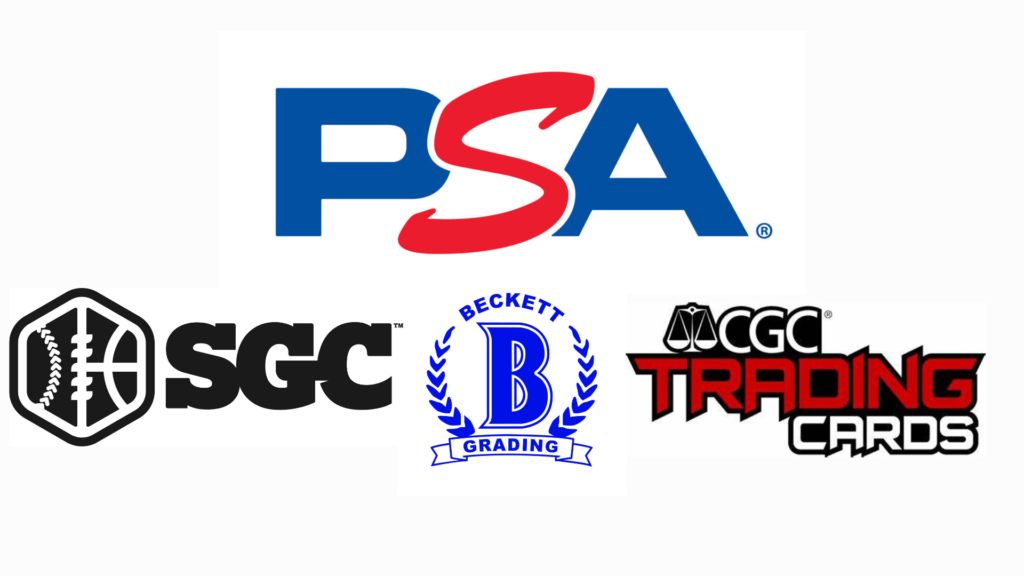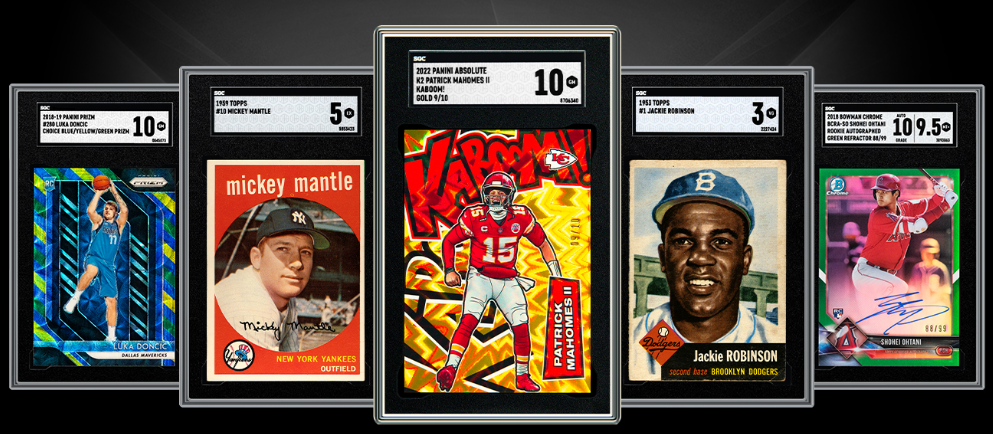Investment in card market can be both an exciting and lucrative endeavor, tapping into the passions of sports enthusiasts and savvy investors alike. With interest in sports memorabilia reaching unprecedented heights, there’s never been a better time to turn your love of the game into a profit-making strategy. Get ready to step up your collecting game!
Key Takeaways
- The fusion of collectible passions and investment acumen can yield substantial returns in the card market.
- Key influencers of a card’s value include scarcity, condition, and player popularity.
- Crafting a varied portfolio and staying attuned to the market are vital for success.
- Engaging with the collecting community can uncover hidden gems and invaluable insights.
Unveiling the Card Market Investment Phenomenon
The card market investment landscape is a rich tapestry woven from the threads of rarity, condition, and player demand. To excel in this market, it’s essential to understand the underlying factors that confer value upon these prized pieces of cardboard history.
Scarcity: The Crown Jewel of the Card World
Scarcity reigns supreme in the card collecting kingdom. Limited print runs, exclusive releases, and special editions create a fervor among collectors and investors alike. The rarer a card is, the more it captivates the market’s attention—and wallet. It’s not merely the count but also factors like misprints, errors, and variations that add to a card’s mystique and appeal.
For instance, a baseball card with a limited print of 100 will generally be more coveted than one with thousands in circulation. Even within those 100, variations like signed versions or those with jersey swatches can skyrocket a card’s desirability.
Condition: The Vanguard of Value Preservation
The state of a card is paramount when it comes to determining its worth. Cards are scrutinized for flaws such as creases, bent corners, and surface wear. These imperfections can swiftly deflate a card’s value. Grading services offer a rigorous assessment, assigning a condition score that becomes the card’s badge of honor—or dishonor.
Collectors dream of the elusive ‘Gem Mint’ status, a grade so pristine that it assures the card’s place at the pinnacle of desirability. Even among high-grade cards, minute differences can mean a staggering disparity in price.
Demand: The Heartbeat of the Marketplace

The final and perhaps most volatile driver of value is demand, which ebbs and flows with the caprices of the card-buying public. Player popularity can wax and wane with career highs and lows, trading and retirement news, or even scandal. A surging rookie can set the market ablaze, while a seasoned athlete’s swan song can either spike a surge of nostalgia-driven demand or a sobering decline.
An all-star performance or an induction into the hall of fame can send a card’s value into the stratosphere. Conversely, an injury or a dip in performance can leave investors holding cards that have plummeted in popularity.
Uncovering Rarity: A Rarity
When it comes to rarities, not all cards are created equal. Serial numbers, holographic features, and autographs are just the beginning. Card investors often seek out those pieces that have a story—a World Series-winning home run, a career-defining touchdown, or a pivot point in sports history captured for eternity on a slip of glossy cardstock.
Celebrating these moments means recognizing what makes a card not just collectible, but a centerpiece of investment. It means hunting down the cards that stand as testament to sports legends, to incredible narratives, and to the cultural zeitgeist of the game.
Scarcity: The Epicenter of Worth
A card’s rarity, dictated by print runs, exclusivity, and unique attributes, can elevate its appeal and fiscal value significantly.
Condition: The Pinnacle of Perfection
In the realm of sports card investing, condition wears the crown. It is the glistening sword that an investor wields to cut through the competition, impacting a card’s market value more acutely than nearly any other attribute.
Grading: The Fine Line of Value Differentiation
The science of card grading is where the condition is quantified. Professional grading services like PSA, BGS (Beckett Grading Services), and SGC (Sportscard Guaranty Company) have developed meticulous, standardized grading systems. These systems consider factors such as centering, corners, edges, and surface to assign a grade which could range from ‘Poor’ (lowest) to ‘Gem Mint’ (highest).
Holders of high-grade cards, such as those graded PSA 10 or BGS 9.5, enjoy the benefits not only of increased appeal but also increased liquidity in the market. A perfect grade can exponentially magnify a card’s worth, transforming the same image, same player, same era into an investment of a different order.
Condition and Longevity: Maintaining Perfection
For cards to retain their grade—and their value over time—impeccable storage and handling are non-negotiable. Cards must be protected from the ravages of ultraviolet light, moisture, temperature fluctuations, and human touch. Savvy investors entrust their premier cards to specialized storage systems, from sleeves and top loaders to temperature-controlled safes, knowing that each defensive measure is an investment in the card’s longevity and, ultimately, its profitability.
Even the finest collection can falter in value due to neglectful storage, rendering what could have been a worthy investment into a cautionary tale of potential overlooked.
Understanding the Grading Scale: Nuances Matter
Among the graded elite, the difference between a ‘Near Mint-Mint’ (PSA 8) and a ‘Mint’ (PSA 9), or even between a ‘Mint’ and a ‘Gem Mint’ might seem inconsequential to the untrained eye. Yet, these subtle gradations can have a pronounced impact on a card’s allure and price tag. Collectors and investors alike quest for perfection, with the scale tipping dramatically at the top end towards those pieces graded as the best of the best.
It’s not enough to possess a rare card—its condition can be the swing vote in a buyer’s decision, the pivotal reason a trade is accepted, or a sale is sealed. A card that attains a flawless score is more than just cardboard; it becomes a treasured artifact, a piece of sports immortalized in mint condition.
The Future of Card Grading: Technological Advances
The future shines bright for grading’s role in the preservation of condition. Technology advancements promise even greater precision in grading, employing high-resolution scans, machine learning algorithms, and perhaps, in time, blockchain verification. These developments herald a new age where the subtleties of condition are venerated with high-tech homage, propelling the card market to new dimensions of exactitude and reliability.
As grading technology advances, so too does the investor’s arsenal of tools. The confidence in a card’s condition paves the way for bolder investments, more assured trades, and data-backed pricing that gratifies the sophisticated market of tomorrow.
When Perfection Meets Passion: The Collector’s Creed
Ask any seasoned collector or investor, and they’ll tell you: the condition doesn’t merely dictate a card’s market value—it narrates the care and respect given to that card over the years. It’s a testament to a collector’s dedication to their craft, the painstaking attention to detail, and the unwavering pursuit of excellence. To many, this is the very heart of the collecting journey, a tangible measure of their passion.
For the investor-collector, achieving and maintaining the pinnacle of perfection is more than an ambition—it’s a creed, a daily practice that ties directly to their portfolio’s worth. The condition of their cards reflects their own reputation for quality and commitment, building trust in their taste and acumen.
Demand: The Market’s Lifeblood
Fans drive the value; thus, a player’s renown and the demand for their memorabilia can significantly influence the card’s market price.
The Blueprint for Card Market Investment Success
Analyze these essential strategies to sharpen your investing instincts and craft a portfolio that stands the test of time.
Comprehensive Research: Your Anchor
In the ocean of card investment, thorough research is the beacon guiding investors to safe harbors of profitable acquisition. It’s the diligence in due diligence that separates the astute investors from the mere hobbyists. This painstaking pursuit of knowledge is what shores up the value of a collection.
The Bedrock of Informed Decisions
Before committing to any card, investors need to immerse themselves in a sea of data. From player stats and career trajectories to market analyses and historical pricing, each piece of information adds to the mosaic of knowledge that supports sound investment strategies.
It’s not enough to know the player – investors must study the seasons, recognize career-defining moments, and understand collector and fan sentiments. All these elements bear weight on a card’s current and future worth.
Market Trends: Sailing with the Current

The card market, like any market, is in constant flux—responsive to trends that can arise as swiftly as they subside. A detailed understanding of these undercurrents allows investors to anticipate shifts and capitalize on emergent opportunities.
For example, the resurgence of interest in vintage cards or the sudden popularity of a rookie can create waves in the market, pushing the prices up. By keeping a finger on the market’s pulse, investors can ride these waves instead of being swept away by them.
Player Performance: The North Star


Athlete performance is a lynchpin in the value of sports cards. An MVP season, a championship ring, or induction into the hall of fame can catapult a card’s worth into the stratosphere. Conversely, a slump in performance or a career-ending injury can drastically sink a card’s investment potential.
The savvy investor watches games, stays updated on athlete health and team dynamics, and takes note of endorsements and public image—all facets that contribute to a player’s stardom and the allure of their cards.
Historical Context: Unearthing the Past for Future Gain
Knowledge of a card’s history and the context in which it was released can add significant layers to its narrative—and its value. Cards that represent historical benchmarks or are part of significant sports events carry a weight that can appreciate over time, much like fine art.
Ownership of a card from a famed series or one released during a significant milestone season adds a richness to a collection, appealing not just to investors but to those who cherish the sport’s heritage.
Embracing the Digital Age: The Info-Tech Advantage
In today’s connected world, information is more accessible than ever. Leveraging online databases, auction house records, and mobile apps can provide real-time insights into card values, rarity, and collector interest.
Modern investors aren’t just found at trade shows and card shops; they’re also active on social media, engaging with online communities, following influencers within the card collecting sphere, and participating in virtual trade sessions.
Research Collaboratively: A Collective Effort
While individual research is critical, collaborating with other collectors can amplify the breadth and depth of insights. Sharing findings, debating strategies, and comparing notes can lead to more well-rounded investment moves.
Collective wisdom is a powerful resource. By engaging in forums and attending meetups, investors pool their knowledge, uncovering nuances and perspectives that individual research might miss.
Timing: Your Secret Weapon
Keen timing in buying and selling is crucial. Market fluctuations can be opportunities if you know the right moment to strike.
Grading: Your Assurance

Grading is the cornerstone of card investment, serving as the investor’s most reliable form of assurance. When it comes to establishing a card’s authenticity and condition, the verdict of a professional grading company carries significant weight and can dramatically influence value.
Professional Grading: The Gold Standard of Quality
Trust in a card’s value is often predicated on the credibility of its grade. Professional grading companies leverage their expertise and precision tools to provide an objective assessment of a card, encapsulated within a tamper-proof slab that declares its grade to the world. This service is the bedrock upon which the card’s investment potential is assessed.
For the investor, securing a high grade from a recognized entity like PSA, BGS, or SGC is akin to obtaining an investment-grade rating for a security. The grade reflects not just the card’s condition and authenticity but also the potential market trajectory.
Nuanced Analysis: Deciphering Grades for Maximum Return

Understanding the subtleties of grading scales is essential for investors looking to maximize their returns. Each grading tier, down to the decimal point, makes a difference—a BGS 9.5 can command prices vastly different from a BGS 9 or even a 9.4. The nuanced differences in centering, corners, edges, and surface can significantly influence a card’s desirability among discerning buyers.
In the eye of the collector and investor, a seemingly small bump in grading can transform a regular collectible into a centerpiece worth coveting. This is where attention to detail pays dividends.
Condition Rarity: The Quest for the Exceptional
Within the card market, a concept known as ‘condition rarity’ further illustrates the significance of grading. It refers to cards that are not necessarily scarce in an absolute sense but are rarely found in top condition. A vintage card, for example, that exists in vast quantities but is seldom seen in a mint or near-mint state becomes a condition rarity, tantalizingly out of reach for most collectors and extremely valuable for the few who possess it.
Investors hunt for these condition rarities, knowing that they often represent the best investment opportunities: cards that will hold their value or potentially increase substantially due to their exceptional state.
The Impact of Grading on Market Dynamics
Grading doesn’t just dictate a card’s potential; it actively shapes the market dynamics. Cards that receive a high grade from a reputable company often see an immediate uptick in demand and price, sometimes creating a ripple effect that boosts the value of lesser-graded versions of the same card. The reassurance and trust grading instills are palpable, underpinning transactions and giving investors a clear signal on where to place their funds.
Card grading has thus evolved into a pivotal market force, guiding the flow of money in the investment ecosystem and providing a transparent and consistent measure by which cards are bought, sold, and traded.
The Evolution of Card Grading Techniques
Card grading has embraced technological advancements to enhance accuracy and reliability. High-resolution imaging, precise measuring instruments, and even plans for integrating artificial intelligence into grading algorithms are on the horizon, promising to bring even higher precision and objectivity to the grading process.
The implications for investors are significant. As grading becomes more sophisticated, the potential for reassurance—and hence, the willingness to invest in high-grade cards—grows, paving the way for an even more robust market.
In the world of sports card investing, grading is your assurance—a mark of quality that gives confidence to buyers and sellers alike. By understanding the fine points of the grading scale, investors can make more informed decisions and select cards that stand the best chance of appreciating over time. And with technology progressing, the future of card grading looks to offer even greater assurance, stability, and clarity for the market.
The true value of a sports card is often locked within its grade, and for investors, a high-grade card is a treasure with the shine of potential profits.
Risks in the Fast Lane and Their Mitigation
Investment ventures carry inherent risks. Here’s how to steer clear of potential pitfalls and safeguard your investments.
Market Volatility: Your Strategy Check
Be ready to pivot as the market sways. A versatile strategy can absorb shocks and keep your investments on track.
Fakes: The Collector’s Foe
The specter of counterfeit cards looms large. Train yourself to spot authenticity with an eagle eye.
Economic Shifts: Beyond the Hobby Spectrum
Your card investments are tethered to broader economic health. Rationalize your investment to weather financial storms.
Collector to Investor: The Evolution Journey
Morphing from a hobbyist to a wise investor needs a deliberate mind-shift. Here’s how to cross that bridge gracefully.
In-Depth Knowledge: Your Wealth Foundation
Every card in your portfolio should be there for a reason. Understand its backstory, scarcity, and trajectory.
Patience: Your Path to Prosperity
While flipping cards can bring quick gains, the true wealth in card investment is usually a fruit of patience and strategic holding.
Networking: Your Growth Ladder
Forge connections with fellow investors, share strategies, and engage in forums. Wisdom often comes from shared experiences.
Star Players: Choosing Cards That Carry Weight
The legends of the sport can be the most potent agents in your investment portfolio. Choose the champions, the promising rookies, and the momentous captures.
Future Hall-of-Famers and Current Marvels
Delve into rookie cards brimming with promise and staples that epitomize athletic brilliance.
Snapshot of Legends
Cards encapsulating the zenith moments in sports can command significant market attention and appreciation.
Digital Trading Floors: The Modern Arena of Card Trading
The card market has transcended to the digital realm with vast prospects at your fingertips. From eBay to dedicated card platforms, the opportunities are boundless.
Ensuring Secure Trades
Protect your investments with platforms that offer robust transactional security and buyer protection.
Expanding Horizons
The digital marketplace throws open the gates to global trading, bringing rare finds and international buyers within reach.
The Art of Preservation and Protection
Safeguard the integrity of your collection to sustain and potentially escalate its value. Opt for superior storage, handle with care, and consider insurance for your prized assets.
The Keeper of Value: Climate Control
Prevailing against the ravages of time means maintaining a storage environment that shields against climatic adversities.
Financial Safeguard: Insurance as a Protective Cloak
Ensure your most valuable collection pieces are covered against unforeseen damages, granting you peace of mind.
Frequently Asked Questions
How can I commence my investment journey in the card market with limited funds?
Begin small, with affordable cards that hold the potential for growth. As you flourish, so will your ability to invest in higher-value pieces.
Can swift profits be realized within the card market?
While possible, quick gains are often coupled with higher risks. A strategic, long-term viewpoint is generally more secure and fruitful.
Is diversification crucial in the realm of card investment?
Expanding your portfolio across various sports, eras, and card types can stave off the risk and stabilize your investments in the face of fluctuations.
Remember to do your homework, set a budget, and network with other collectors. With a bit of strategy and passion, investing in the card market can be both enjoyable and financially rewarding.
If you’re diving into the world of card collecting with an eye for investment, remember to play the long game and enjoy the process. It’s a market that requires patience, knowledge, and a true love for the sport and its history. Happy collecting!

Hi there! I’m Felix Gonzalez and I am the owner of Card Collecting Insider, and I’m thrilled to welcome you to my site! With our tagline “Uncover the Art of Collecting, One Card at a Time,” I’m here to provide you with expert insights, valuable resources, and the latest trends in the world of card collecting. Whether you’re a seasoned collector or just starting out, I’m dedicated to helping you discover hidden gems and sharing insider tips to elevate your collection. So join me on this exciting journey, as I dive deep into the captivating realm of card collecting. Let’s unlock the true beauty of these collectible treasures together!

